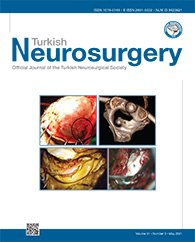MATERIAL and METHODS: From May 2012 to January 2017, 317 patients with L5/S1 LDH treated with MED, PETD or PEID were reviewed. Pre- and postoperative pain was measured using a visual analog scale (VAS; 0 ?10), and functional status was assessed using the Oswestry Disability Index (ODI; 0 ? 100%). Clinical outcomes, SF-36 scores and CK levels were compared between the 3 groups.
RESULTS: There were 177 females and 140 males; the ages ranged from 22 to 74 years; and the course of disease was 15 to 85 days, with an average of 42.8 days. The postoperative bed rest time and average hospital stay in the MED group were higher than in the other two groups, and the differences were statistically significant. There was no significant difference in the results evaluated by the MacNab criteria. There were no significant differences in the levels of CK between the three groups before and after surgery (p>0.05).
CONCLUSION: Three minimally invasive surgeries for the treatment of L5/S1 LDH achieved satisfactory clinical outcomes; however, each procedure has its own advantages, disadvantages and indications. Surgeons need to choose the most appropriate surgery according to the individual condition of the patient to achieve the best therapeutic effect.
Keywords : Percutaneous endoscopic lumbar discectomy, Minimally endoscopic discectomy, Lumbar disc herniation, Transforaminal, Interlaminar




